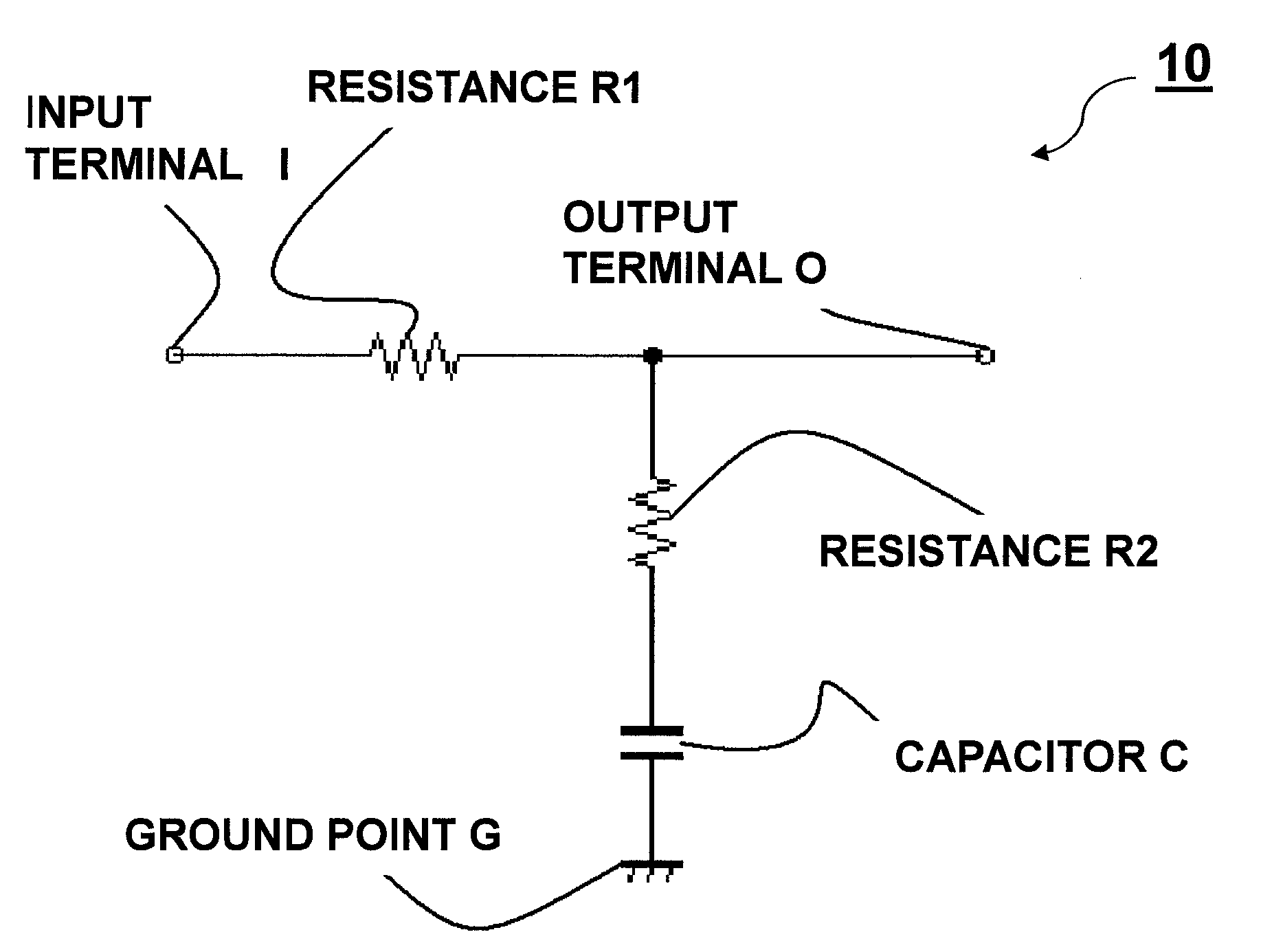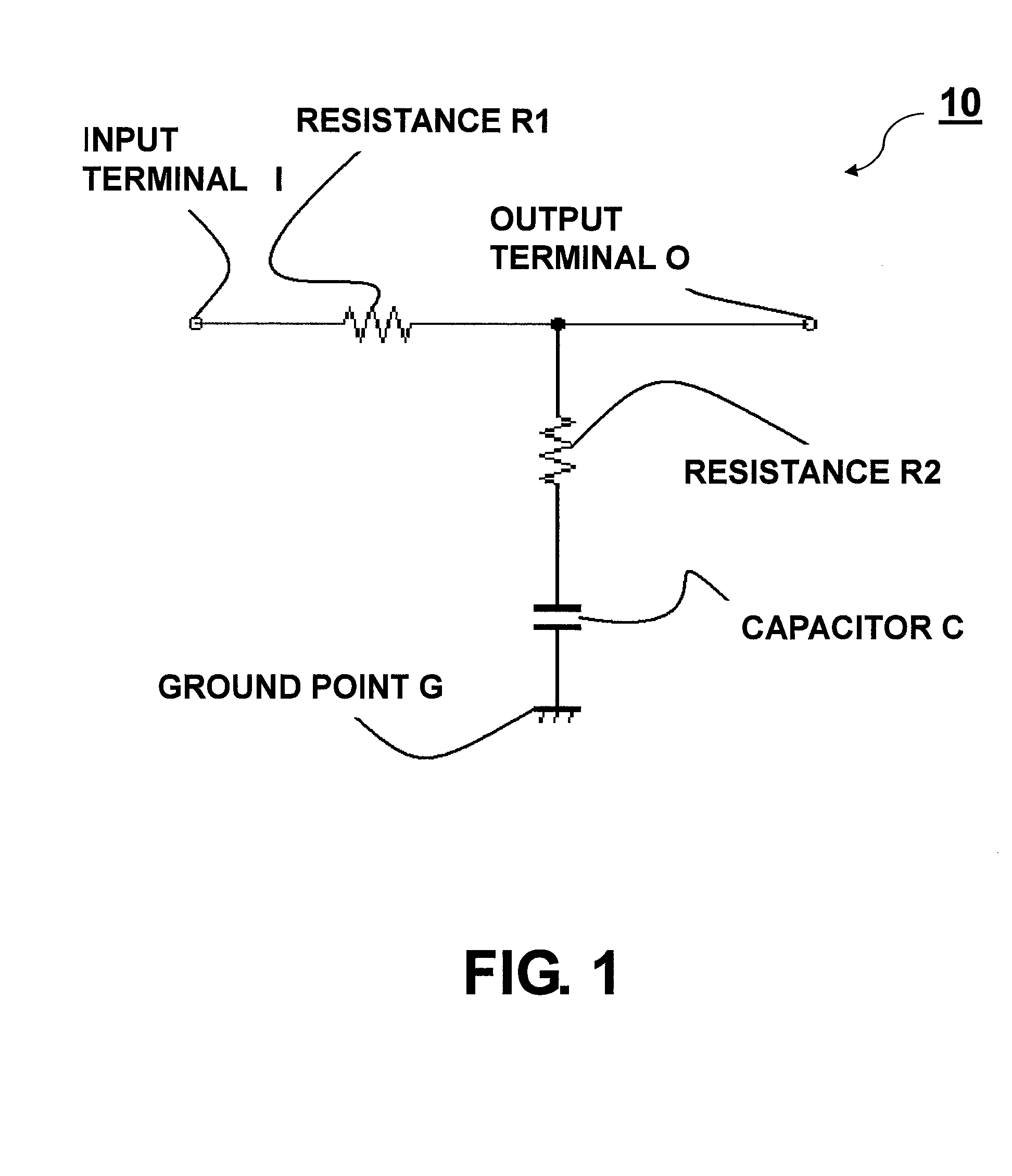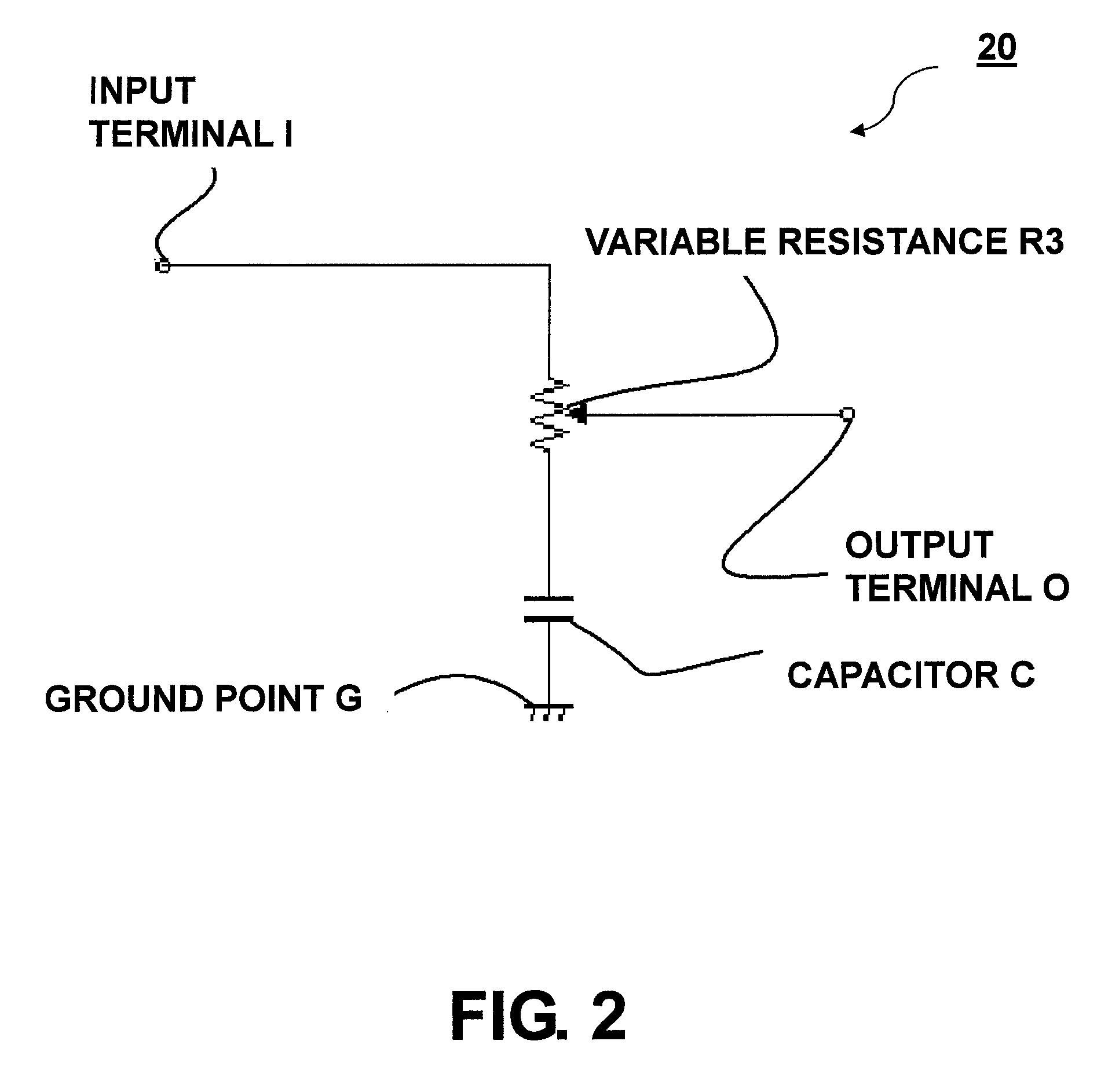Filter circuit
a filter circuit and filter technology, applied in the field of filter circuits, can solve the problems of difficult generation of canceling signals that can completely cancel out a noise heard through user's ears, low frequency of audio signals to be processed thereby, and difficulty in applicability of filter circuits listed abov
- Summary
- Abstract
- Description
- Claims
- Application Information
AI Technical Summary
Benefits of technology
Problems solved by technology
Method used
Image
Examples
first embodiment
[0047]In FIG. 1, this low-pass filter circuit 10 is formed by: connecting a resistance R1, a resistance R2, and a capacitor C in series in this order between an input terminal I and a ground point G; and providing an output terminal O that picks up an output signal at a connection point of the resistance R1 (first resistance) and the resistance R2 (second resistance). A cutoff frequency fclp of the low-pass filter circuit 10 is determined according to a time constant obtained from: a combined resistance value R of the resistance R1 and the resistance R2, i.e., R1+R2; and a capacitance value of the capacitor C.
[0048]An output level of the low-pass filter circuit 10 can be obtained through the following formula:
√((1+(2πfCR2)2)) / (1+(2πfC(R1+R2))2)
[0049]Here, “f” denotes a frequency of an input signal. As with the conventional low-pass filter circuit, the low-pass filter circuit 10 attenuates frequencies higher than the cutoff frequency fclp. Moreover, when the frequency of the input si...
second embodiment
[0052]Another embodiment of the filter circuit of the present invention is shown in FIG. 2. A low-pass filter circuit 20 shown in FIG. 2 has, in place of the resistances R1 and R2 provided in the low-pass filter circuit 10, a variable resistance R3. In the low-pass filter circuit 20, the output terminal O is provided at a movable terminal of the variable resistance R3.
[0053]Thus, ratio of a resistance dividing the voltage of the input signal is variable by changing the position of the movable terminal. As a result, the low-pass filter 20 can provide the same effect as provided by the low-pass filter 10 by setting the resistance values of the resistances R1 and R2 with the certain resistance ratio Nr as in the first embodiment. Therefore, the filter circuit having the optimal phase characteristic can easily be obtained.
[0054]The maximum phase delay frequency will be explained. In the filter circuit of the present invention, as the frequency of the input signal becomes higher, the pha...
third embodiment
[0057]Still another embodiment of the filter circuit according to the present invention will be described. FIG. 4 is a circuit diagram depicting an example of a high-pass filter circuit as an example of the filter circuit according to the present invention. As shown in FIG. 4, this high-pass filter circuit 30 is formed by: connecting a capacitor C1, a capacitor C2, and a resistance R in series in this order between the input terminal I and the ground point G; and providing the output terminal O that picks up the output signal at a connection point of the capacitor C1 and the capacitor C2. A cutoff frequency fchp of the high-pass filter circuit 30 is determined based on a time constant obtained from: a combined capacitance value of the capacitor C1 and the capacitor C2, i.e., C1+C2; and a resistance value of the resistance R.
[0058]Similar to the conventional high-pass filter circuit, the high-pass filter circuit 30 outputs a frequency component higher than the cutoff frequency fchp, ...
PUM
 Login to View More
Login to View More Abstract
Description
Claims
Application Information
 Login to View More
Login to View More - R&D
- Intellectual Property
- Life Sciences
- Materials
- Tech Scout
- Unparalleled Data Quality
- Higher Quality Content
- 60% Fewer Hallucinations
Browse by: Latest US Patents, China's latest patents, Technical Efficacy Thesaurus, Application Domain, Technology Topic, Popular Technical Reports.
© 2025 PatSnap. All rights reserved.Legal|Privacy policy|Modern Slavery Act Transparency Statement|Sitemap|About US| Contact US: help@patsnap.com



